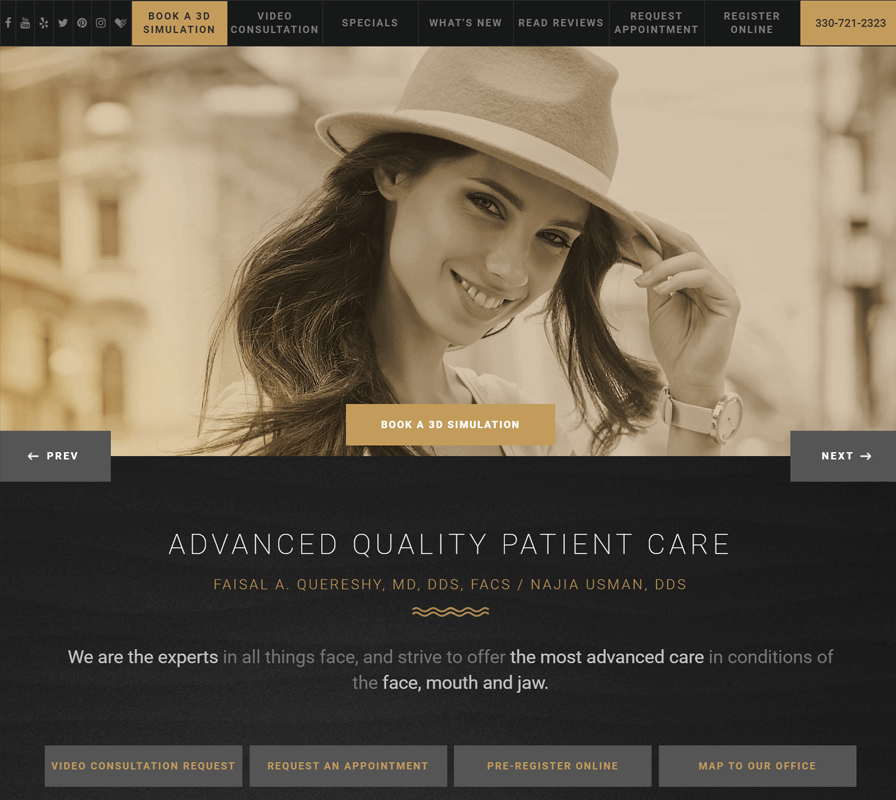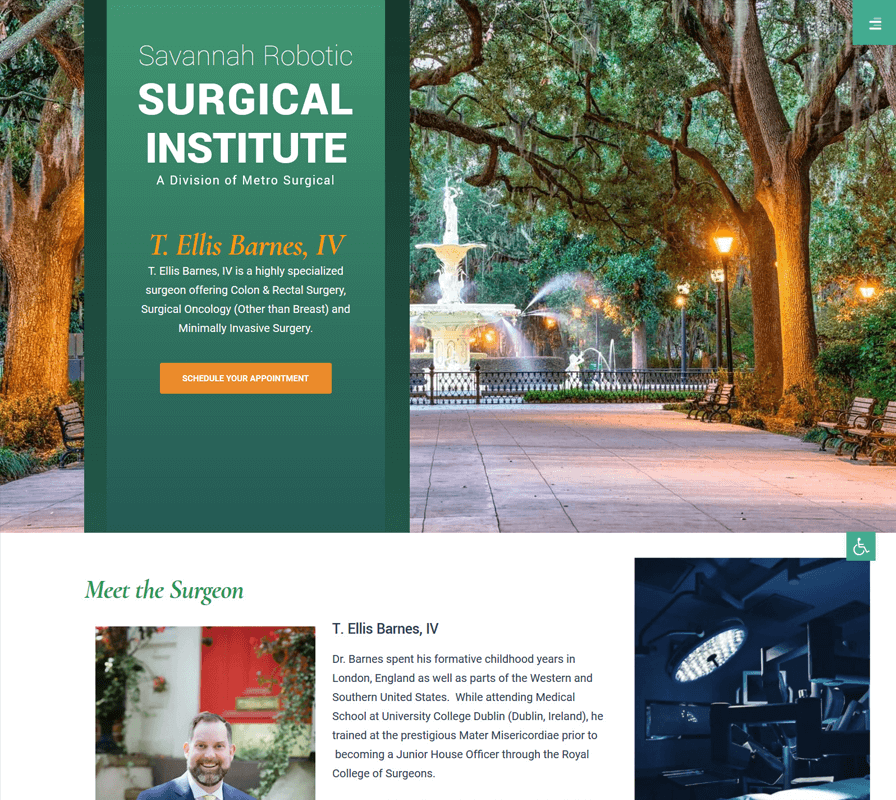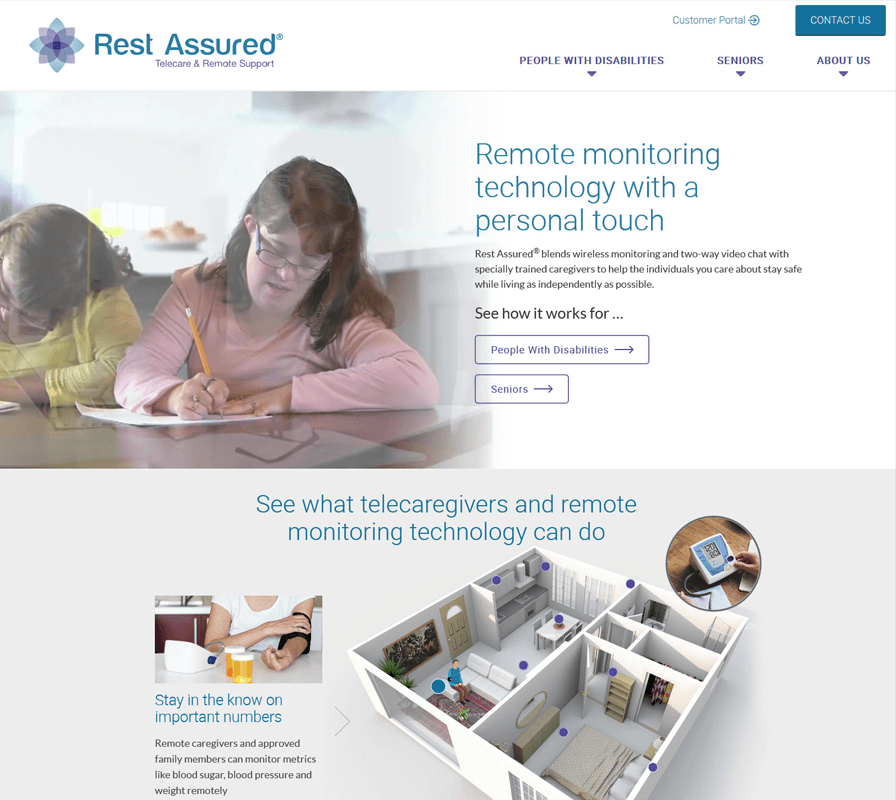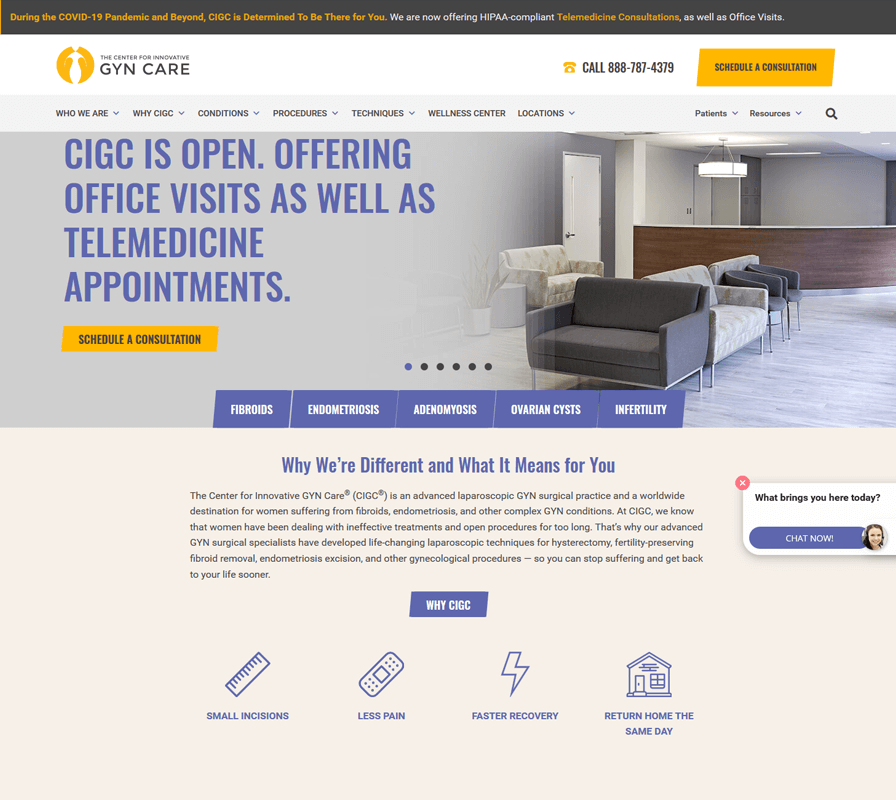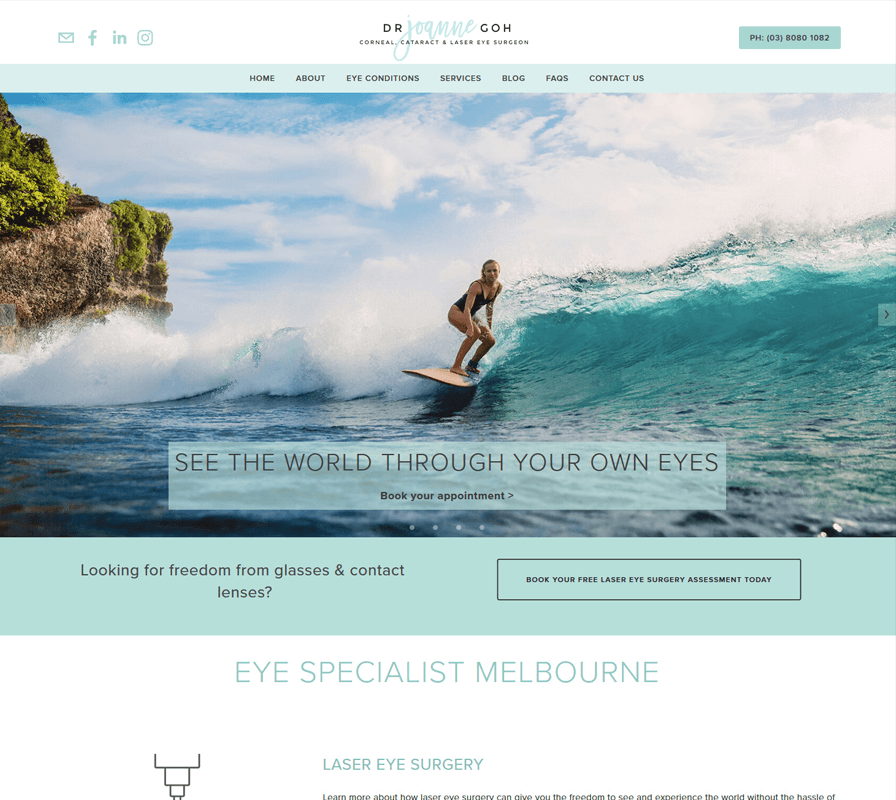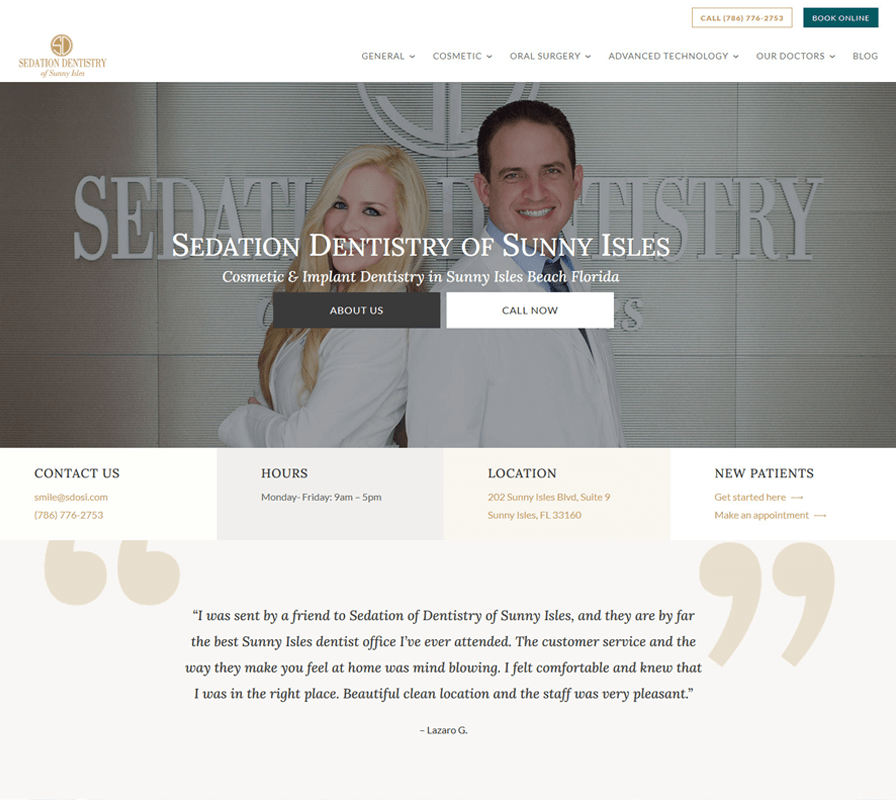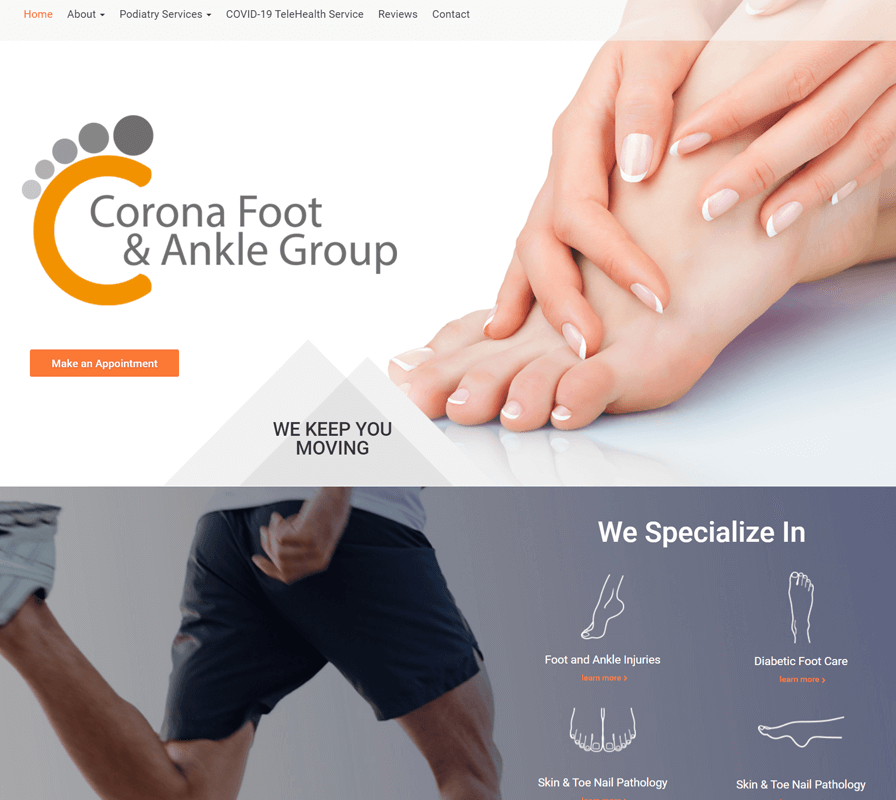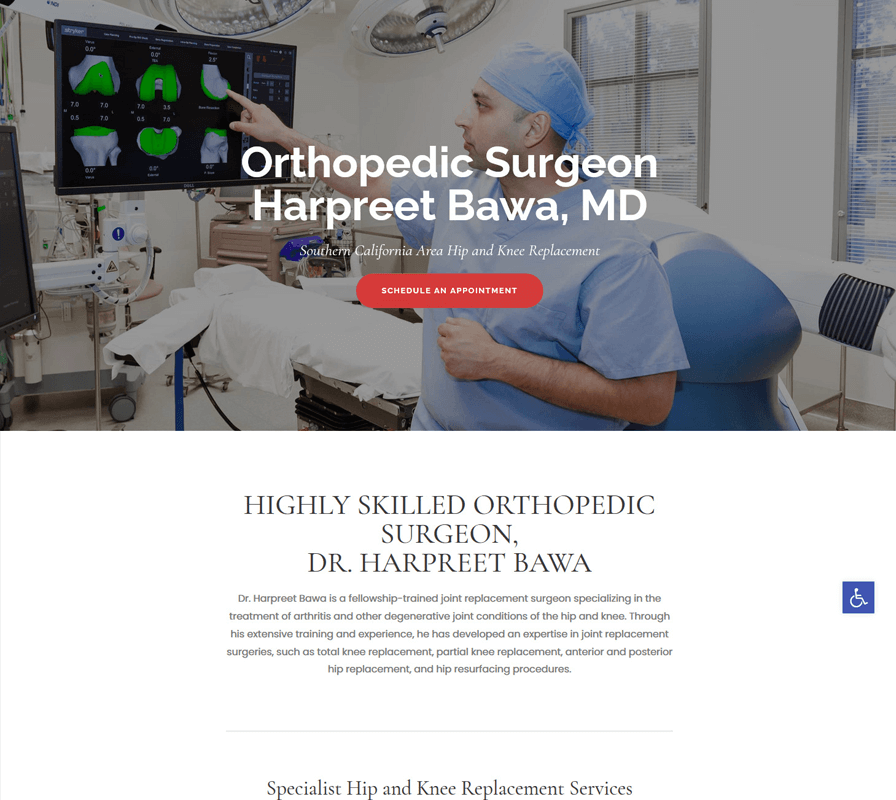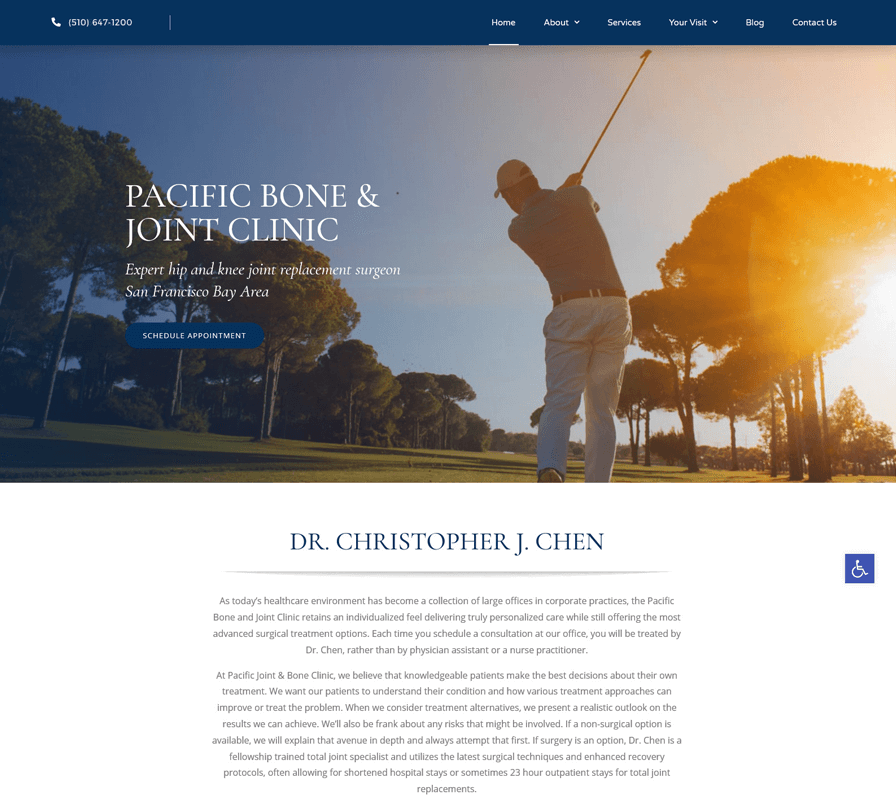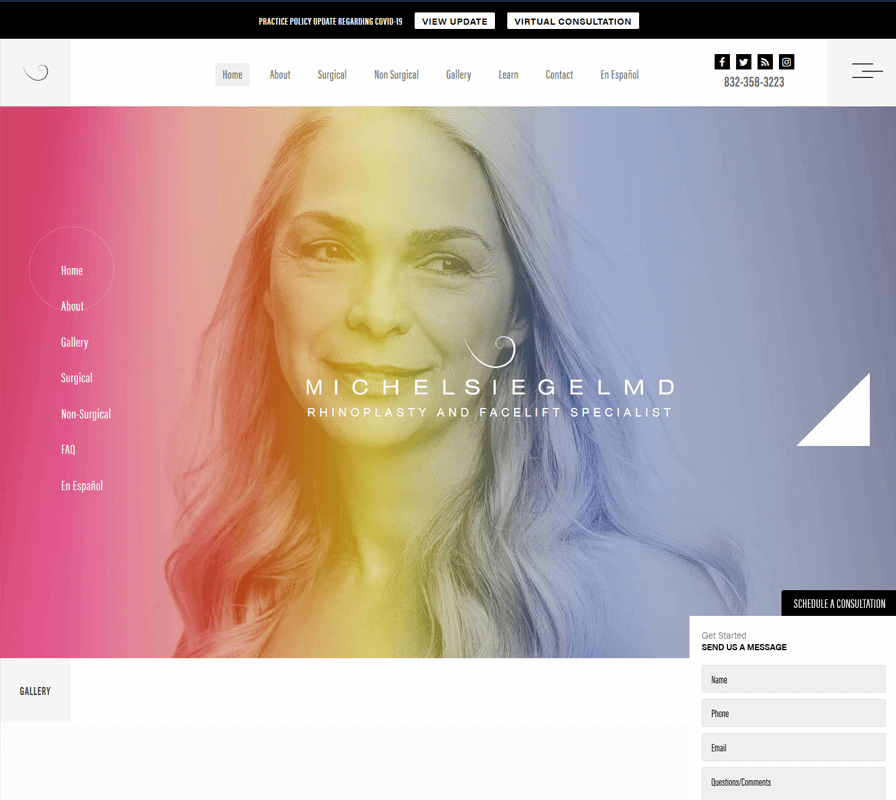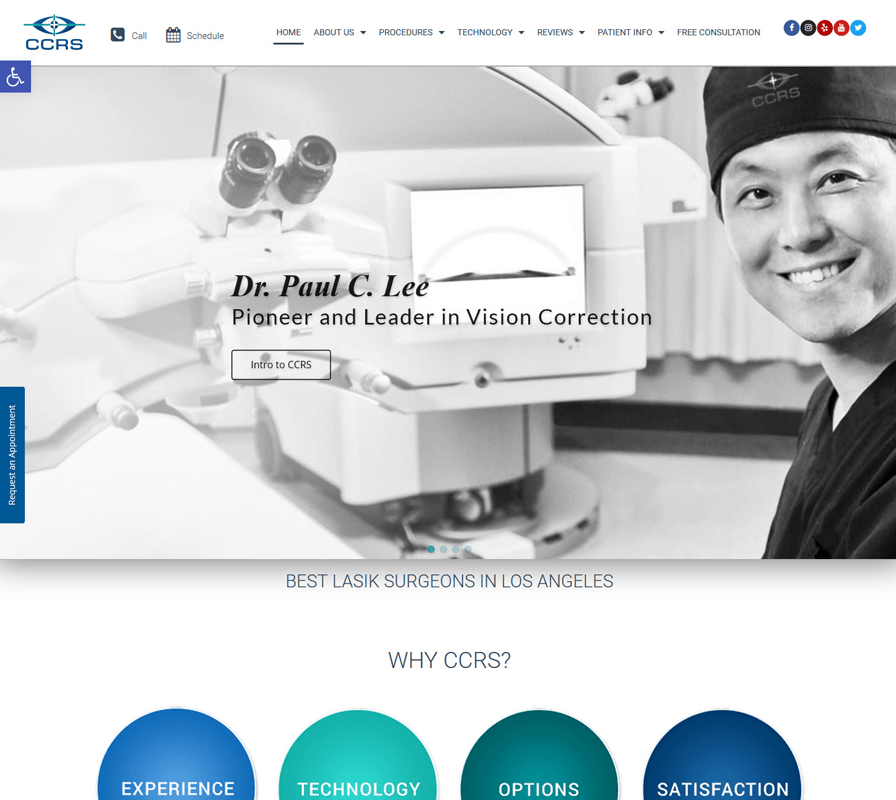Medical websites are no longer just a place to locate office location and contact information, but now also serve as a place where customers book appointments online, view client examples for services offered, view physician and employee bios, and view detailed resources for services, news, and industry innovations. Therefore, a good medical website will incorporate the following features:
- A well performing and secure website
- Responsive design that allows visitors to book appointments online from any desktop, mobile, or tablet device
- Offering different types of content to engage visitors such as client examples, an industry news section, photo galleries, and more
- Offering “call to action” areas throughout the website, such as “book an appointment” or “request more information about our services,” to help increase conversion rates
- Compelling visuals such as photography and video
- Inclusion of value statements — competitive advantages, company mission and vision, description of company culture, and employee bios
Performance and Security
Having a medical website design that performs well and is secure is more important than you think. Both performance and security actually affect search engine rankings, with less secure and poor performing websites being ranked lower by search engines. A medical website that loads around two seconds is considered well performing. In terms of security, make sure HTTPS is installed on your website for data protection purposes.
Responsive Design
Having a medical website design that is responsive across all devices is also considered an important component for website design. Now more than ever, people rely on smartphones for browsing the web, and it can be frustrating if you have to zoom in and out to view website content if it is not optimized for smartphone use. This can contribute to a high bounce rate due to frustration with the website. Responsive design also is a factor in search engine rankings, with well optimized websites ranking higher in search results.
Content Creation
Medical websites no longer just serve as a place to find contact information and office location. In order to compete with similar businesses, your medical website should include new content that visitors can engage with. Not only does new content help in telling your brand’s story, but it also allows a visitor to engage for longer periods of time on a website. So what types of content should you include in your medical website? Below are a few examples:
- blog posts- could discuss innovations in your industry, new technologies or anything that relates to your medical business
- client testimonials or case studies- testimonials are essential on medical website designs and allow visitors to understand different instances where you have been able to help patients
- resource section- could include different documents relating to your industry and medical practice
- patient portal- could include forms they can download prior to visits, a place to view test results or book additional appointments right from the website
Call to Action Areas
In order to improve conversion rates on a medical website design, you should include “call to action” areas where visitors can further engage with your business. For a medical website, this could include buttons to “book an appointment/consultation”, “request more information” or talk with a specialist. Inclusion of forms is another great way to improve conversion rates. These forms could have visitors enter contact information and any questions they may have for a doctor/surgeon etc. The more information you are able to collect from a visitor, the more opportunity your business will have for further communication with the individual.
Photography and Video
Medical websites should include great imagery and other media in order to capture the attention of your visitors. Stock photography can look outdated and gives less of a personal feel to your business website. Instead, consider having professional photos taken of your office location, staff or medical technology to give a more personalized, professional feel to your website. Including video can also be a great way to educate your audience prior to a visit at your office location.
Inclusion of Value Statements
It is also important to consider including value statements within your medical website. Value statements help visitors understand how your medical business can help them and maybe why to choose them over another similar practice. Below are a few examples of value statements you could include in your medical website:
- Competitive Advantages
- Employee Bios (maybe include educational background and experience working in the field)
- Statistics (examples might include the number of surgeries performed or patients helped)
- Company culture (what does it look like to work for your business in terms of office life? This can be great for potential applicants)
- Company mission and vision statement- What does your business hope to accomplish? How are you working towards these goals?
